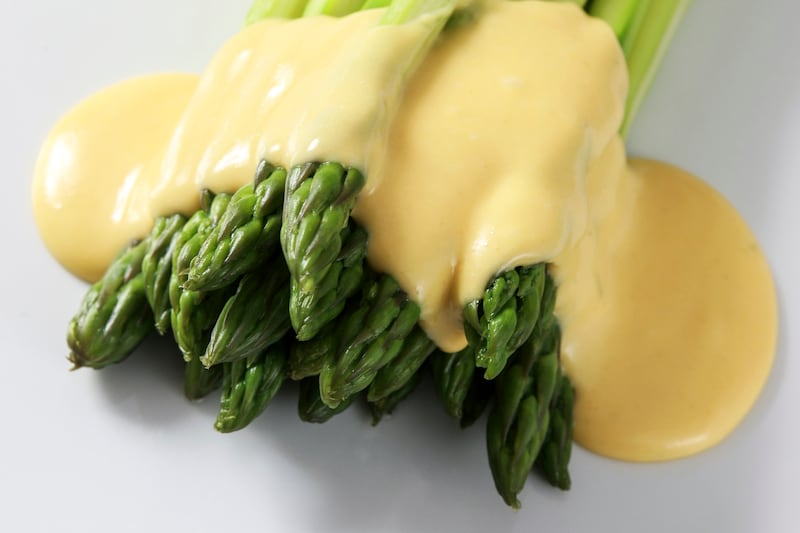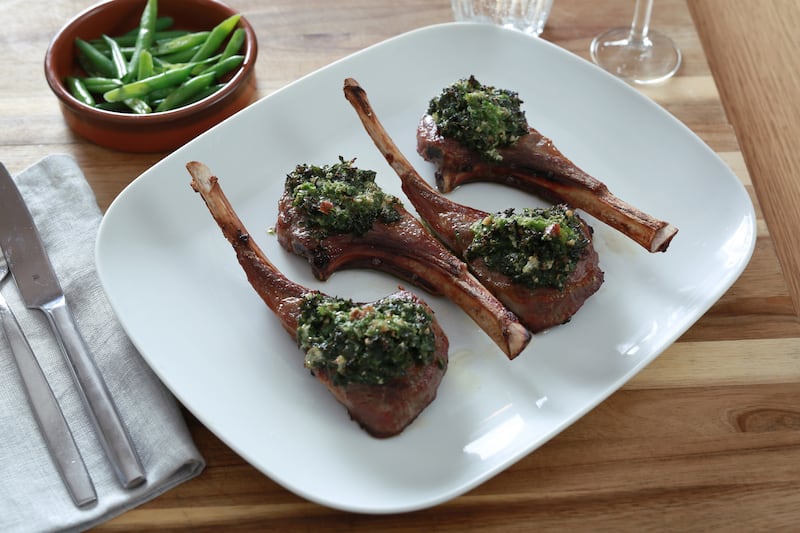WHETHER you’re attempting Veganuary, going full vegan or just want to cut down your meat consumption and be a bit healthier in 2022, learning a few new plant-based recipes is a good place to start.
But when it comes to animal-free food, the cashew milk cheeses, fake meats and egg substitutes that now adorn supermarket shelves aren’t exactly synonymous with wallet-friendly food shopping.
In many ways, doors into the world of animal-free eating have really opened up – it’s certainly easier to be vegan than ever before – but easy doesn’t always mean accessible. And many of us are watching the pennies right now, especially given the pandemic’s financial impact.
Henry Firth, who makes up half of vegan power duo BOSH!, along with pal Ian Theasby, agrees: “Vegan food has exploded and now it’s all over the supermarkets, which is great. You’ve got burgers, sausages, fish alternatives, milk alternatives – the problem is, that stuff can be quite an expensive way to eat, if you’re buying all of that in your weekly shop.”
So for their sixth cookbook – BOSH! On A Budget – the pair, both 37, wanted to “show people the grassroots of vegan cooking” instead. “It’s grains, it’s fruits, it’s nuts and seeds, it’s inherently cheap and it’s inherently healthy,” says Firth. “People don’t understand that.”
Their new collection of cheap vegan recipes doesn’t avoid meat and diary alternatives altogether, they’ve just gone very light on them. “We’re not absolutists”, says Firth – there’s a “little sprinkling of vegan cheese, the odd splash of plant-based milk”. But the dishes come in at £1 or £2 a portion – and many cost far less. And it was easy, says Theasby, “because vegan food is actually very, very cheap”.
Well, it can be. There are two recipes simply using tinned tomatoes, for example: “The cheapest thing you can buy!” says Firth. “If you treat them with a little bit of respect, for instance, sieving off the sauce and then roasting the tomatoes, you get some fantastic, deep, rich flavours.”
The pair are big fans of the humble chickpea – even cheaper when bought in bulk – and their recipes for chana masala and samosas make use of this nutrition heavyweight.
But saving money in the kitchen is often as much about how you cook, as it is about the ingredients you use. For example, you could cook a 10-portion vegan ragu and then use it in several dishes – from lasagne to bolognaise. A lot of their recipes are specifically designed to be freezer-friendly too.
“Get into the mindset of buying less,” suggests Firth, “and then try to use as much as possible of the thing that you bought. Use the whole veggie as much as possible.” Less waste means less money wasted as well, and it’s good for the environment – a big reason the duo went plant-based in the first place.
From the beginning, they’ve always created dishes they didn’t want to miss out on: think vindaloo curry – “the flavours are just absolutely incredible” – and the Italian cheesy classic, cacio e pepe.
Plus, if nutrition is your priority this January, Firth says: “A very colourful fruits and vegetable-based diet is both affordable and pretty much the best thing as far as your body is concerned.” He believes the notion that it’s hard to get all the nutrients you need in a vegan diet is only true if “all you’re eating is crisps, pasta, chips and beige-coloured things – then absolutely, you’re going to struggle!”
It’s been seven years since the childhood friends went vegan themselves (Firth cold turkey – a method he describes as “difficult and challenging but rewarding and liberating”, and Theasby with a gradual approach) and through their YouTube channel, BOSH.tv (youtube.com/c/BOSHTV) and a massive social media presence, they’ve quelled many misconceptions about veganism since then – yet for men, they feel like there’s still a social acceptance issue.
“There’s definitely still some stigma attached to men being vegan,” says Theasby.
“It might be a little more difficult for men to decide to make the change to veganism.” The idea that eating lots of meat and drinking lager is ‘manly’ is embedded in our culture, he says, “but those negative aspects of British culture are becoming unravelled and changing for the better. So hopefully, in five years time, it won’t be as much of an issue.”
In fact, some of the biggest influencers on the vegan food scene are men – including sport stars Louis Hamilton and Fabian Delph. Theasby adds: “The more men you see on social media, or in magazines and on television, cooking [vegan food] is going to go a long way to help other men who are on the cusp of changing their diet, to make them think it’s actually OK.”
As we become more and more aware of the environmental footprint of what’s on our plates, new ways to use plants, beans and other natural vegan ingredients are being discovered and developed all the time. So what else does the future hold for the world of plant-based eating?
Well, you might be seeing more TVP (or hearing about it for the first time perhaps). “It’s quite esoteric, little known and a bit weird, TVP is textured vegetable protein – essentially soybeans that are dried out, soybean husks,” explains Firth. “They’re high in protein, nutrient-dense, and you can buy them crazy cheap dried, and then you can turn them into your own meat replacement, hitting them with flavour.” (One recipe in the new book, hummus with Mexican ‘beef’, includes it).
There’s also plant-based ‘fish’ made from algae. “The cool thing is that you get omega oils in it, and it tastes inherently fishy. You can make a gorgeous tuna or salmon replacement with that,” Firth says.
Then there’s banana blossom, which Firth describes as “a flower from the end of the banana tree cooked a lot in Thai food, we’ve started using it in this country. It’s flaky in appearance and takes on flavour.”
But the starting point of animal-free cooking is simple, wholesome, cheap ingredients – and if you’re new to it and want to give it a go, Firth says preparation is key.
“Whether that’s buying a cookbook, finding a good source of recipes online, planning a couple of recipes, getting a shop in, so that you’ve got what you need to get you through three, four, five days.”
BOSH! On A Budget by Henry Firth and Ian Theasby is published by HQ, priced £16.99. Photography by Lizzie Mayson. Available now. Below are three recipes for you to try at home...
VEGAN CHEESE AND ONION TARTE TATIN
(Serves 8 as a starter or four as a main)
7 mixed red and white onions (about 500-600g)
3tbsp vegetable oil
1tbsp dairy-free butter
10 sage leaves
1tbsp sugar
2-3tbsp balsamic vinegar
20g smoked dairy-free Cheddar
1 x 375g sheet ready rolled dairy-free puff pastry
Salt and black pepper
To serve:
Green salad
Method:
Preheat the oven to 200°C. Put a 24 centimetre deep ovenproof frying pan with a lid over a medium-low heat. Make sure you have a board or plate that will fit tightly over the pan. Cook the onions: peel and halve the onions. Add the oil, dairy-free butter and the sage leaves to the hot pan. After a couple of minutes, pour off a little of the sage butter into a small bowl and set the crispy sage leaves aside on a sheet of kitchen paper. Add the onion halves to the pan, cut-sides down. Season generously with salt and pepper, sprinkle the sugar over the onions and drizzle over one tablespoon of the balsamic vinegar. Turn down the heat, cover the pan and cook for 15 minutes. Finely grate the cheddar. Build the tart: unroll the pastry and cut it in half widthways to make fitting the pastry into the pan easier. Take the lid off the pan and scatter half the cheese over the onions. Drape the two pieces of pastry over the top to cover the onions (they will overlap in the middle). Carefully tuck the pastry in around the onions, being careful not to burn your fingers on the side of the pan. Prick the pastry all over with a fork and brush the top with the reserved sage butter. Transfer the pan to the hot oven to bake for 25 minutes, until golden brown and puffed up. Serve: remove the pan from the oven (the handle will be hot!). Lay the board or plate over the pan then carefully flip it over to tip out the tart. Drizzle over the remaining balsamic vinegar, reserved cheese and the fried sage leaves. Slice and serve with a simple green salad.
JACKFRUIT LARB
Serves 4 (as a lunch or a starter)
2 x 400g tins jackfruit
1 lemongrass stalk
1 garlic clove
2.5cm piece fresh ginger
2-3 red chillies
10g fresh coriander
10g fresh mint
50g salted peanuts
2 baby gem lettuces
1tbsp groundnut oil
For the dressing:
2 limes
1 banana shallot
1tbsp light soy sauce
1tbsp sweet chilli sauce
Method:
Preheat oven to 200°C. Line a baking tray. Make sure you have a clean tea towel, a pestle and mortar and a wok.
Roast the jackfruit: drain and rinse the jackfruit, then pat dry with the clean tea towel. Spread out on the lined baking tray and roast in the hot oven for 20 minutes. Use two forks to pull apart and shred the jackfruit. Meanwhile, prepare the remaining ingredients: trim the lemongrass stalk, strip the bark and slice finely. Peel and finely grate the garlic and ginger. Finely slice the chillies. Pick the coriander leaves and finely slice the stems. Pick the mint leaves. Break the peanuts up in the pestle and mortar. Cut away the stems of the lettuce, pull apart the larger leaves and rinse under cold water. Halve the limes for the dressing, peel the shallot, cut it in half and finely slice it lengthways. Cook the larb: warm the oil in the wok over a medium-high heat. Add the jackfruit and stir for three to four minutes. Add the lemongrass, garlic, ginger, two of the chillies and the coriander stems. Stir for two minutes. Turn the heat down to very low to keep warm, stirring occasionally to make sure it doesn’t catch. Make the dressing: squeeze the lime juice into a bowl. Add the sliced shallot and squash it slightly to break it down a little. Add the soy sauce and sweet chilli and stir to combine.
Serve: spoon the jackfruit mixture into the lettuce leaves, drizzle over the dressing, garnish with the fresh coriander, mint leaves, broken peanuts and a few slices of chilli if you like it extra kicky. Serve immediately.
TEMPEH VINDALOO
(Serves 4)
1 potato
1 large brown onion
3 large tomatoes
6 garlic cloves
3cm piece fresh ginger
10g fresh coriander
1tbsp vegetable oil
3tbsp tomato puree
2tbsp white wine vinegar
Salt
500ml Henry’s Curry Stock (see below)
For the curry stock (makes 4 litres):
3 garlic cloves
3cm piece fresh ginger
1 tbsp vegetable oil
1 x 400g tin chopped tomatoes
4 litres water
6 large onions
4 medium carrots
3 tomatoes
1 green pepper
1 red pepper
2 large bay leaves
1tbsp curry powder
1tbsp garam masala
1tbsp ground turmeric
1tbsp salt
1tsp chilli powder
1tsp coriander seeds
1tsp ground coriander
1tsp ground cumin
1tsp peppercorns
For the tempeh:
400g tempeh
½tsp salt
1tsp ground turmeric
½tsp chilli powder
2tbsp flour
1tbsp vegetable oil
For the spice mix:
4 green cardamom pods
2 big bay leaves
2-4tsp hot chilli powder
1tsp cumin seeds
1tsp fennel seeds
1tsp ground coriander
1tsp ground turmeric
½tsp black peppercorns
½tsp garam masala
¼tsp ground cinnamon
Method:
Make your curry stock. If you’re using frozen curry stock, defrost it ahead of time. Peel and grate the garlic and ginger. Add the oil and all the spices to the pot along with the grated garlic and ginger. Cook for about five minutes. Add the chopped tomatoes. Pour in 500ml of the water and leave to simmer. Prep your veg for the stock: peel and roughly chop the onions. Trim and roughly chop the other vegetables. Add all the veg to the pan along with three and a half litres of water. Lower the heat, cover the pot and simmer for about one hour, stirring occasionally. To finish your stock, find and remove the bay leaves. Use a stick blender to blend the stock in the pan until completely smooth. Use straight away or for extra stock, leave to cool to room temperature, divide the cool stock between containers and store for up to three months in the freezer. Get a saucepan of salted water with a lid on a high heat, a steamer or heatproof colander, and a large frying pan. Prepare your potatoes and tempeh: cut the potato into two centimetre chunks. Cut the tempeh into two to three centimetre chunks. Add the potatoes to the pan of boiling salted water. Place the steamer or colander on top, add the tempeh and cover. Cook the potatoes and steam the tempeh for seven minutes. Remove the tempeh and set aside. Drain the potatoes. Cook the tempeh: measure the salt, turmeric, chilli powder and flour into a bowl. Stir to combine. Add the steamed tempeh and toss to coat completely. Place a frying pan over a medium-high heat and pour in the vegetable oil. Add the tempeh to the hot oil and fry for about 10 minutes, stirring regularly, until lightly browned. Remove and set aside. Prep the ingredients: peel and grate the onion. Roughly chop the tomatoes. Peel and grate the garlic and ginger. Finely chop the coriander. Cook the curry: measure the spice mix into the dry frying pan. Add the tablespoon of oil and place on a medium heat. Cook for two minutes, adding half a cup of water to loosen if it gets too dry. Add the grated onion and a pinch of salt. Sauté for five to seven minutes, stirring frequently, until the fragrances have released. Add the garlic and ginger and cook for three more minutes. Add the tomato puree and a large splash of water. Cook for three minutes, stirring frequently. Add the stock, vinegar, chopped tomatoes, tempeh and potatoes. Reduce the heat to medium-low and simmer for 10 minutes. Taste and adjust the seasoning, adding more spice mix, salt or vinegar if needed. Top with the chopped fresh coriander and serve.







